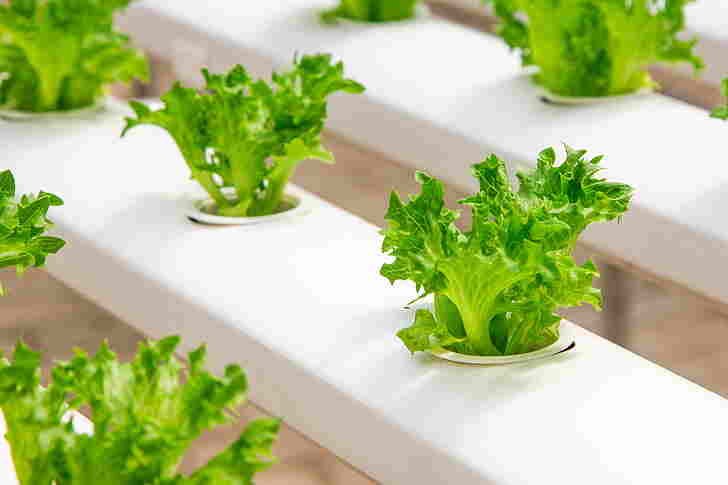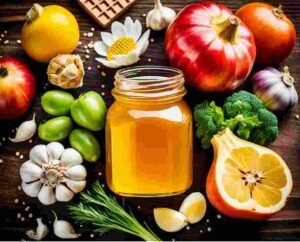In today’s world, there is growing recognition of the importance of sustainable and environmentally friendly agricultural practices. One such practice that has gained significant attention is organic farming. In this article, we will explore Organic Farming: Types, Importance, Pros & Cons meaning, and significance of organic farming, and the advantages and disadvantages it offers.
Key Takeaways:
- Organic farming refers to a sustainable agricultural practice that focuses on using natural inputs and avoiding synthetic chemicals and genetically modified organisms.
- There are different types of organic farming, including polyculture, biodynamic farming, and permaculture, each emphasizing alternative ecological principles and techniques.
- Organic farming offers numerous benefits, such as reduced environmental impact, improved soil health, and enhanced biodiversity.
- However, there are also potential drawbacks of organic farming, such as higher costs and lower yields compared to conventional methods.
- Considering the pros and cons, organic farming plays a vital role in supporting sustainable agriculture and promoting a healthier environment.

Table of Contents
1. What is Organic Farming? Types, Importance, Pros & Cons
In the world of agriculture, organic farming embodies a sustainable and eco-friendly approach to cultivation. It revolves around using natural methods and inputs while avoiding synthetic chemicals and genetically modified organisms (GMOs). This form of farming focuses on preserving biodiversity and promoting the overall health of the ecosystem.
Organic farming, unlike conventional farming, doesn’t rely on chemical pesticides and synthetic fertilizers that may have adverse effects on the environment and human health. Instead, it emphasizes the use of organic fertilizers, crop rotation, and natural pest control methods to maintain soil fertility and plant health.
The core principles behind organic farming include:
- Minimizing environmental impact
- Promoting soil fertility and biodiversity
- Preserving natural resources
- Avoiding the use of GMOs and synthetic chemicals
These principles shape the agricultural practices of organic farming, ensuring a sustainable and holistic approach to food production.
2. Types of Organic Farming
Explore the diverse types of organic farming in this section and gain insights into how each approach emphasizes different ecological principles and techniques to promote sustainable farming.
1. Polyculture
Polyculture is a type of organic farming that involves growing multiple crops together in the same area. This practice promotes natural pest control, enhances biodiversity, and improves soil fertility by harnessing the synergistic interactions between different plant species.
2. Biodynamic Farming
Biodynamic farming goes beyond organic practices by considering the farm as a holistic, self-sustaining organism. It involves using preparations made from natural materials to stimulate the farm’s vitality and enhance its nutritional content. Biodynamic farming also emphasizes biodiversity, crop rotation, and the use of organic pest and weed control methods.
3. Permaculture
Permaculture constitutes a design framework oriented toward establishing agricultural ecosystems that are both sustainable and self-sustaining.. It incorporates principles of ecological harmony, integrated pest management, and agroforestry techniques. Permaculture farms work in harmony with nature to produce a diverse range of crops while minimizing waste and maximizing resource efficiency.
4. Hydroponics
Hydroponics is a soil-less method of organic farming that involves growing plants in nutrient-rich water. It utilizes mineral nutrient solutions to support plant growth, allowing for precise control over growing conditions. Hydroponics offers advantages such as maximized crop yields and minimized water usage.
5. Aquaponics
Aquaponics combines aquaculture (raising aquatic animals) with hydroponics (growing plants in water) in a mutually beneficial system. The waste produced by the aquatic animals serves as a nutrient source for the plants, while the plants filter and purify the water for the animals. This closed-loop system promotes efficient resource utilization and creates a sustainable farming environment.
| Organic Farming Type | Main Features |
| 1.Polyculture | Promotes biodiversity and soil fertility by growing multiple crops together. |
| 2. Biodynamic Farming | Considers the farm as a self-sustaining organism and uses natural preparations to enhance vitality and nutritional content. |
| 1. Polyculture | Creates sustainable agricultural ecosystems using ecological harmony and resource efficiency. |
| 3. Permaculture | Grows plants in nutrient-rich water, allowing for precise control over growing conditions. |
| 4. Hydroponics | Combines aquaculture and hydroponics to create a mutually beneficial system. |
3. Organic Farming: Importance, Pros & Cons
Organic farming plays a vital role in sustainable agriculture, offering numerous advantages while also presenting some challenges. By embracing organic farming practices, farmers can minimize their environmental impact, improve soil health, and promote biodiversity.
Advantages of organic farming:
- Reduced environmental impact: Organic farming avoids the use of synthetic chemicals, pesticides, and genetically modified organisms, resulting in lower levels of pollution and soil degradation.
- Improved soil health: Organic farmers prioritize the use of natural fertilizers and encourage practices like crop rotation and composting, which promote soil fertility and long-term sustainability.
- Enhanced biodiversity: Organic farms provide a diverse habitat for plants, insects, birds, and other wildlife, fostering a balanced ecosystem and contributing to overall biodiversity conservation.
However, it is important to acknowledge the potential drawbacks of organic farming:
- Higher costs: Organic farming methods often require more labor-intensive practices and may involve higher costs for organic certification, which can make it financially challenging for some farmers.
- Lower yields: Organic farms may experience lower crop yields compared to conventional farms due to various factors such as pest control challenges and nutrient limitations.
Organic farming offers numerous advantages, including reduced environmental impact, improved soil health, and enhanced biodiversity. However, it also presents challenges such as higher costs and lower yields.
To make an informed choice about organic farming, farmers need to consider both the benefits and drawbacks. By weighing these factors, they can determine the viability of organic farming for their specific agricultural goals and circumstances.
4. Conclusion
Throughout this article, we have explored the fascinating world of organic farming. We started by understanding the meaning and significance of organic farming, which lies in its commitment to sustainability and the use of natural inputs. By avoiding synthetic chemicals and genetically modified organisms, organic farming promotes biodiversity and ecological balance.
We then delved into the different types of organic farming, such as polyculture, biodynamic farming, and permaculture. Each approach emphasizes unique ecological principles and techniques, showcasing the diverse strategies available for sustainable agricultural practices.
Organic farming holds great importance for our planet. Its benefits include reduced environmental impact, improved soil health, and enhanced biodiversity. However, we also acknowledge the potential drawbacks, including higher costs and lower yields. Nevertheless, the pros outweigh the cons when considering the long-term impact of organic farming on our environment and health.
as we conclude, let us reflect on the role of organic farming in supporting a more sustainable and environmentally friendly approach to agriculture. By choosing organic products and supporting organic farmers, we contribute to a healthier planet and a brighter future for generations to come.
5. FAQ
1. What is organic farming?
Organic farming is an agricultural practice that focuses on sustainability, biodiversity, and the use of natural inputs while avoiding synthetic chemicals and genetically modified organisms.
2. What are the types of organic farming?
There are various types of organic farming, including polyculture, biodynamic farming, permaculture, and more. Each approach emphasizes different ecological principles and techniques to promote sustainable farming.
3. Why is organic farming important?
Organic farming plays a vital role in sustainable agriculture. It reduces environmental impact, improves soil health, and enhances biodiversity. It offers a more environmentally friendly approach to farming.
4. What are the benefits of organic farming?
The benefits of organic farming include reduced environmental impact, increased soil fertility, improved water quality, and healthier food for consumers. It supports sustainable and eco-friendly agricultural practices.
5. Are there any drawbacks to organic farming?
Yes, there are potential drawbacks to organic farming. It tends to have higher costs than conventional agriculture, and yields may be slightly lower. However, many farmers and consumers believe the environmental and health benefits outweigh these drawbacks.




